Consejos
Cómo crear una experiencia inmersiva en juegos de fútbol de realidad virtual
Descubre cómo hacer que los juegos de fútbol de realidad virtual se sientan increíblemente reales. Obtén consejos profesionales sobre calibración, accesorios realistas, audio, trabajo en equipo y entrenamiento físico para una experiencia de juego inmersiva inigualable en los juegos tradicionales.
Anuncios

Ponerse unas gafas de realidad virtual y pisar un campo virtual es como teletransportarse directamente a tu deporte favorito. El sonido, las imágenes y la captura de movimiento se combinan, y de repente, los juegos de fútbol de realidad virtual despiertan una energía diferente: nerviosismo, emoción y anticipación, todo a la vez.
Los jugadores competitivos y los aficionados ocasionales anhelan esa adrenalina: correr, pasar y anotar con auténtica experiencia atlética. La tecnología actual aporta más realismo, haciendo que los juegos de fútbol de realidad virtual sean más realistas que nunca. La emoción va mucho más allá de los juegos de consola tradicionales.
Entender cómo optimizar la inmersión te garantiza aprovechar al máximo la diversión y el rendimiento de tus sesiones. Este artículo explora técnicas probadas, consejos para subir de nivel y ajustes inteligentes que puedes usar en cada partida. ¡Comencemos!
Aumentar el realismo: calibrar la configuración para un juego auténtico
El ajuste preciso de los controles y el audio sienta las bases para una jugabilidad creíble, que se siente real en cada carrera. Estos ajustes te permiten adaptar la simulación a tus reflejos y preferencias, haciendo que los juegos de fútbol de realidad virtual sean totalmente tuyos.
Ajusta los controles deslizantes del campo de visión y la velocidad de respuesta para que se adapten a los movimientos naturales de tu cabeza y manos. Cuanto más precisa sea la calibración, menos probable será que pierdas la inmersión durante el juego y mejor reaccionarás instintivamente en los momentos intensos.
Maximizar la precisión del seguimiento de movimiento
Ponte de pie con los pies separados a la anchura de los hombros y estira los brazos; replica el centro de tu zona de juego real. Di: «Esta es mi línea de carrera». Deja que el sistema reconozca tus límites.
Ajusta los ángulos de cámara en tus estaciones base hasta que nada te bloquee los brazos ni las piernas durante los barridos y saltos. Es importante si alguna vez te agachas, te lanzas o giras. Practica un chasquido o un pivote para ver si el avatar te sigue el ritmo.
Marca tus límites físicos con cinta adhesiva o una alfombra. Cuando el juego se intensifique, evitarás golpes accidentales, algo fundamental para el realismo de los juegos de fútbol de realidad virtual y para mantener la seguridad.
Personalice el audio para una mayor interacción
Los auriculares con sonido envolvente completan la ilusión: el eco de los pasos, el rugido de la multitud, el golpeteo del balón. Ajusta el volumen para escuchar tu propia respiración junto con las señales del juego; los sonidos sutiles facilitan el descubrimiento del juego.
Usa los controles de equilibrio del juego para ajustar el ruido del público y las decisiones de juego. Haz que la charla táctica sea más prominente, imitando las bromas del partido real. Esta superposición sensorial te lleva a una mayor profundidad, creando esa sensación de "estadio" incluso cuando estás solo.
Desactiva las notificaciones o sonidos del sistema innecesarios antes del inicio del partido. Un pitido ocasional puede romper el hechizo y afectar la intensidad de los partidos de fútbol de realidad virtual en momentos críticos.
| Función de calibración | Qué hace | Cuándo ajustar | Resultado |
|---|---|---|---|
| Campo de visión | Controla la visión periférica | Sentir visión de túnel o fatiga visual | Mayor conciencia situacional en el juego |
| Sensibilidad de seguimiento | Altera la velocidad de entrada de la mano/brazo | Respuestas retardadas al movimiento | Animaciones de avatar más fluidas |
| Mezcla de audio | Equilibra los sonidos ambientales y del equipo. | Es difícil escuchar las llamadas o la pelota. | Comunicación más clara, sonido envolvente. |
| Sistema de límites | Define el borde del área de juego | Colisiones físicas con el entorno | Movimientos más seguros y confiados |
| Mapeo del controlador | Asigna gestos a acciones | Fallos o omisiones de movimientos críticos | Precisión de juego mejorada |
Crea un ambiente de estadio: una lista de verificación sensorial para cada sesión
Transformar tu sala en un estadio mejora la inmersión. Las señales físicas y los toques ambientales estimulan tus sentidos, haciendo que los juegos de fútbol de realidad virtual se sientan casi tangibles. Cada pequeño ajuste añade autenticidad.
Usa accesorios reales, como tapetes de césped artificial o una sutil ventilación, para simular las condiciones del estadio. Las sombras y la iluminación deben coincidir con las ubicaciones del partido para darle ese toque especial. Los ajustes inteligentes también hacen que tu campo virtual y tu público cobren vida físicamente.
Crea la superposición de audio perfecta
Combinando sonidos naturales del exterior con locutores virtuales, te sentirás como en un campo abarrotado. La superposición resalta los momentos destacados: prueba a colocar altavoces exteriores cerca de las ventanas para combinar la simulación con la realidad.
Pruebe el volumen durante los ejercicios de calentamiento. Si una llamada se ve ahogada por los aficionados digitales, reduzca ligeramente el ruido del público. Priorice las señales sonoras, como silbatos y pasos, para que reflejen las llamadas de juego reales y la percepción del movimiento.
- Mejora el audio del público del estadio en momentos clave; mantiene la energía y la motivación en las jugadas difíciles. Ajusta el audio para celebraciones de goles o paradas defensivas de último minuto, imitando entornos deportivos reales.
- Graba tus propias jugadas y cánticos de equipo; escuchar voces familiares durante los partidos aumenta la conexión con el equipo virtual y profundiza la inmersión, especialmente durante las rondas de práctica en solitario.
- Agregue subwoofers debajo de los pies; la vibración física durante los tackles o sprints crea un vínculo subconsciente entre sus movimientos reales y la acción del juego, lo que hace que los juegos de fútbol de realidad virtual sean mucho más atractivos.
- Experimenta con listas de reproducción de música de fondo; tanto las canciones que animan antes del partido como los himnos clásicos del estadio influyen en la concentración. Intenta empezar con alta intensidad y bajarla gradualmente al comienzo del primer cuarto.
- Integra apps de audio espacial; estas optimizan el posicionamiento del sonido 3D, permitiéndote seguir a jugadores o compañeros rivales de forma más intuitiva en enfrentamientos dinámicos. Las zonas de audio dedicadas te ofrecen una ventaja de audio profesional.
Configura una prueba rápida en cada sesión, ajustando el volumen y los efectos hasta que el movimiento o las señales de juego se activen instintivamente. Pequeños cambios pueden mantener los juegos de fútbol de realidad virtual impredecibles y con una gran cantidad de detalles.
Añade puntos de contacto físicos para mayor realismo
Coloca bancos, conos o banderines a tu alcance para que puedas agarrarte o esquivar como en un entrenamiento en vivo. La retroalimentación física fortalece la memoria muscular y ayuda a tu cerebro a "creer" la experiencia.
Usa tacos o calcetines con buen agarre al jugar en colchonetas que imitan el césped natural. Cada pisada se siente deliberada y precisa, como pisar un campo real. Esto hace que las ráfagas de velocidad y dirección sean más satisfactorias.
- Programe cambios regulares de accesorios; intercambie el equipo cada cuatro sesiones para mantener las experiencias frescas, evitando la complacencia y manteniendo una imprevisibilidad genuina en los juegos de fútbol de realidad virtual.
- Mantenga las superficies limpias y seguras; eliminar los peligros de tropiezo contribuye a un juego sin riesgos y hace que sea más fácil correr, saltar o girar durante ejercicios de alto estrés.
- Programe la retroalimentación de vibración en los controladores; las respuestas táctiles adicionales durante el juego (como pasar, chasquear o recibir) aumentan la confianza y refuerzan las señales de entrenamiento para una mejora más rápida.
- Coordine las prácticas del equipo con configuraciones idénticas; sincronizar los accesorios y diseños físicos garantiza que todos en su equipo reaccionen de la misma manera a los escenarios virtuales, lo que mejora la estrategia y la cohesión del grupo.
- Cambie los arreglos de iluminación; rotar entre configuraciones "nocturnas" y "diurnas" durante cada sesión de práctica agudiza su adaptabilidad y mejora la ilusión de temporadas de fútbol reales y dinámicas.
Revisa después del entrenamiento: anota qué accesorios y escenarios te hicieron olvidar que estabas en casa. Usa esto para perfeccionar tu configuración inmersiva la próxima vez y asegurarte de que cada partido de fútbol de realidad virtual siga subiendo el listón.
Agudiza los reflejos: adapta los ejercicios al juego virtual
Los sprints virtuales, los ejercicios mano-ojo y los ejercicios de conciencia espacial entrenan la rapidez de reacción directamente en los juegos de fútbol de realidad virtual. Implementar estas rutinas mejora tu juego, ayudándote a reaccionar ante cualquier impredecible evento del partido como lo hacen los atletas profesionales.
Integrar minijuegos basados en reacciones
Elige ejercicios que desafíen tanto la anticipación como la toma de decisiones instantáneas. Por ejemplo, corre sin moverte del sitio y luego esquiva rápidamente cuando aparezcan conos digitales. Intenta gritar "¡Balón a la izquierda!" mientras le lanzas un pase virtual a tu avatar en plena carrera.
Guiones de ejercicios: «Cuando el balón brille, deslízate a la izquierda. Cuando suene el silbato, acelera hacia adelante». Practicar secuencias de llamada-respuesta fortalece la memoria muscular y te prepara para el caos de partidos improvisados en juegos de fútbol de realidad virtual.
Graba y repite tus movimientos después de cada ejercicio. Identifica los puntos de indecisión: pausas, retrasos, cambios de pie torpes. Trata estos puntos en tu próxima ronda de práctica para corregir tus debilidades y ganar confianza en el campo.
Simular la tensión del partido con desafíos cronometrados
Configura un cronómetro visible durante los partidos de práctica de dos minutos. Aplica los errores forzados: "Si suelto el balón, haz cinco flexiones". Lo que está en juego genera adrenalina, reflejando la intensidad del deporte en vivo para los competidores de juegos de fútbol de realidad virtual.
Compite contra avatares de IA gritando "¡Ya!" en los ejercicios iniciales. Registra tu tasa de éxito después de cada secuencia: la presión por ganar en un plazo determinado genera una auténtica urgencia y compromiso con la mejora.
Rota roles con amigos o con la IA: a veces mariscal de campo, a veces receptor. Responder a diferentes señales (como "¡Corta a la derecha!" o "¡Cubre al corredor!") desarrolla inteligencia adaptativa en el juego, al igual que los atletas versátiles del mundo real.
Tácticas de actualización: analizar los comentarios y ajustar la estrategia
Aprovechando los datos del juego y las funciones de repetición, los jugadores adaptan su estrategia con rapidez y decisión. Este análisis práctico perfecciona el criterio durante el partido y genera jugadas más competitivas durante los difíciles enfrentamientos de fútbol de realidad virtual.
Después de cada sesión, abre el panel de estadísticas. Compara las tasas de pases completos, las distancias promedio de pase y las pérdidas de balón. Presta atención a los comentarios del entrenador durante el partido y luego anota consejos prácticos, como: "Espera más tiempo antes de lanzar bajo presión". Usa estas indicaciones para definir tu próximo libro de jugadas.
Crea una biblioteca de libros de jugadas con movimientos personalizados
Diseña tres jugadas para cada situación de juego: yardas cortas, blitz y zona roja. Escribe las órdenes en voz alta ("¡Inclina a la izquierda con la señal!"). Ejecuta cada jugada tres veces, revisando el video para asegurar la precisión en el tiempo y el ángulo.
Refina los gestos para que sean nítidos y detectables. Si el sistema malinterpreta un movimiento, vuelve a grabarlo. Pide a tus compañeros que realicen ejercicios en vivo; coordina llamadas audibles para la comunicación en momentos clave de los partidos de fútbol de realidad virtual.
Lleva un registro digital de lo que funciona: «El barrido por el lado fuerte consigue un 80 % de conversión en segunda y corta». Sigue experimentando y actualizando jugadas a medida que te adaptas al metajuego y a los cambios de estilo personal.
Comparte y compara con amigos para entrenar el trabajo en equipo
Sube repeticiones clave a un servidor privado para tu equipo. Revísalas en grupo, haciendo pausas para hablar de los éxitos y los fracasos. Fomenta la retroalimentación honesta y práctica: "La próxima vez, adelanta medio paso para bloquear el blitz".
Programa sesiones semanales de práctica virtual. Sincroniza las vistas de las gafas y practica ejercicios individuales y rutas de pase coordinadas con ritmo. Esta coordinación hace que tu equipo de juegos de fútbol de realidad virtual se sienta como un equipo real: unido y preparado.
Rotar a los líderes en cada sesión para que todos adquieran experiencia en la toma de decisiones, lo que aumenta la versatilidad y las habilidades de comunicación, vitales para la coordinación de alto nivel y los ajustes espontáneos de los partidos.
Refinar el movimiento en el mundo real: Acondicionamiento para la resistencia en VR
Trasladar el entrenamiento de ejercicios tradicionales a la realidad virtual aumenta la energía y la resiliencia. Integra circuitos de peso corporal y calentamientos flexibles para mantener la agudeza de reacción, evitando la fatiga durante largas sesiones de fútbol en realidad virtual y mejorando el rendimiento general.
Realiza carreras a intervalos escalonados durante el calentamiento: alterna 20 segundos de trote con 10 segundos de estiramiento activo. Esto no solo prepara tu sistema neuromuscular, sino que también ayuda a prevenir calambres y rigidez a medida que se intensifican los partidos virtuales.
Centrarse en la estabilidad y la agilidad del núcleo
La debilidad muscular del core causa desequilibrio y una traducción de movimientos poco fiable en escenarios de realidad virtual. Prioriza las planchas, los puentes de glúteos y las paradas en T en casa. Cada una mejora la estabilidad, ayudándote a pivotar y esquivar con naturalidad durante los momentos impredecibles de los partidos de fútbol de realidad virtual.
Imitando las escaleras de agilidad reales, crea una serie de cuadrados de cinta en el suelo. Practica toques rápidos con el pie y cambios de dirección con los auriculares puestos. La rutina desarrolla una memoria muscular sólida y acelera la transferencia de habilidades a cada práctica virtual.
Termina las sesiones con respiración consciente o agarres estáticos. Entrénate para recuperarte rápidamente entre cada caída: respiraciones profundas y tensión muscular controlada. Esta rutina mantiene la mente despejada y el cuerpo listo para movimientos explosivos o placajes inesperados.
Estírate y recupérate completamente después de cada práctica.
Dedica de 7 a 10 minutos a la relajación después de largos partidos de fútbol americano en realidad virtual. Realiza estiramientos de isquiotibiales sentado o gira suavemente los hombros para liberar la tensión acumulada al lanzar y lanzar.
La hidratación es importante: bebe sorbos de agua entre ejercicios, siguiendo las recomendaciones de rendimiento deportivo habituales. Presta atención a los mensajes de tu cuerpo: la rigidez, la fatiga o los calambres requieren estiramientos más lentos y atentos.
Incluye un día de descanso a la semana. El sobreentrenamiento en realidad virtual, al igual que en los deportes en vivo, disminuye el rendimiento y puede afectar la percepción espacial. Respeta la recuperación para mantenerte preparado para la próxima victoria.
Conclusión: Mejora cada partida de realidad virtual con ajustes inteligentes
Mejorar tus partidas de fútbol de realidad virtual con una configuración adecuada, indicaciones reales y entrenamiento progresivo te permitirá alcanzar una dimensión de juego completamente nueva. Los entornos personalizados, las repeticiones tácticas y la retroalimentación del equipo impulsan tu crecimiento individual y como compañero.
Una mejora sostenida requiere atención a los detalles digitales y físicos, desde la creación de un manual de juego honesto hasta rutinas de fitness fiables. Cada ajuste te ayudará a lograr la inmersión que engancha a los jugadores a este medio en constante evolución.
Cada partido de fútbol de realidad virtual se convierte en una oportunidad para batir tus propios récords, conectar con amigos y probar estrategias profesionales. Sumérgete, experimenta con valentía y haz que cada sesión sea más convincente que la anterior: tu campeonato virtual te espera.
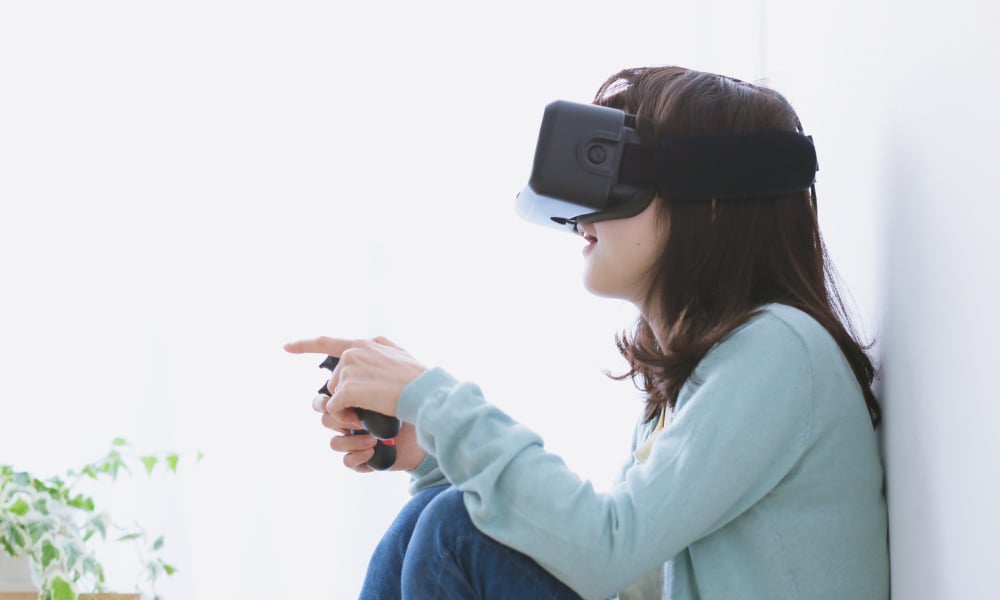
Juegos de realidad virtual para entusiastas del deporte
Descubre los juegos deportivos de realidad virtual para vivir experiencias activas e inmersivas que desafíen tus reflejos y habilidades.
Tendencias
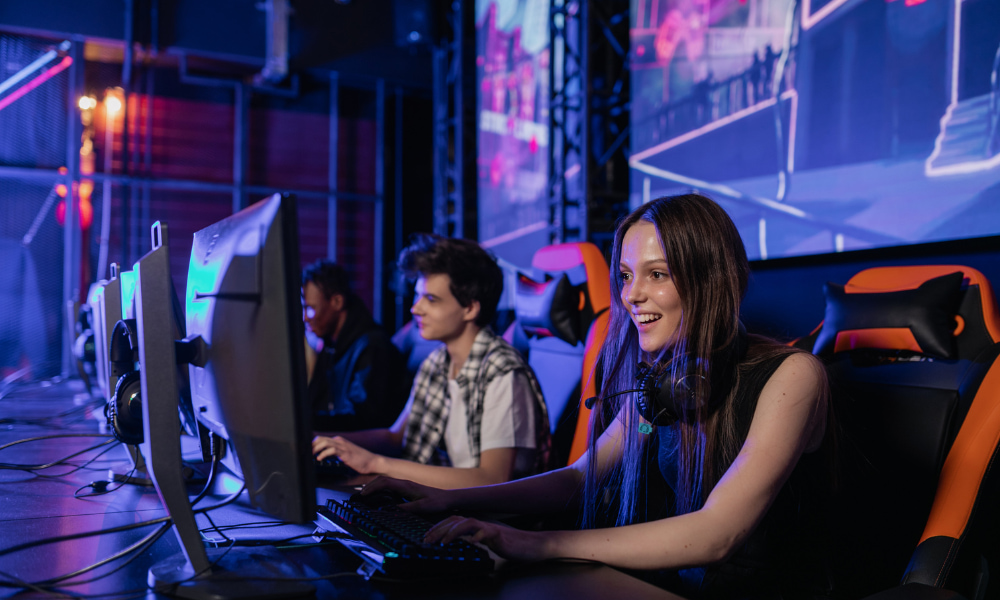
Mujeres en los eSports: desafíos y logros destacados
Las mujeres en los eSports están teniendo un impacto innegable, desafiando los estereotipos y dando forma al futuro de los juegos móviles con habilidad, estrategia y liderazgo.
Continúe Leyendo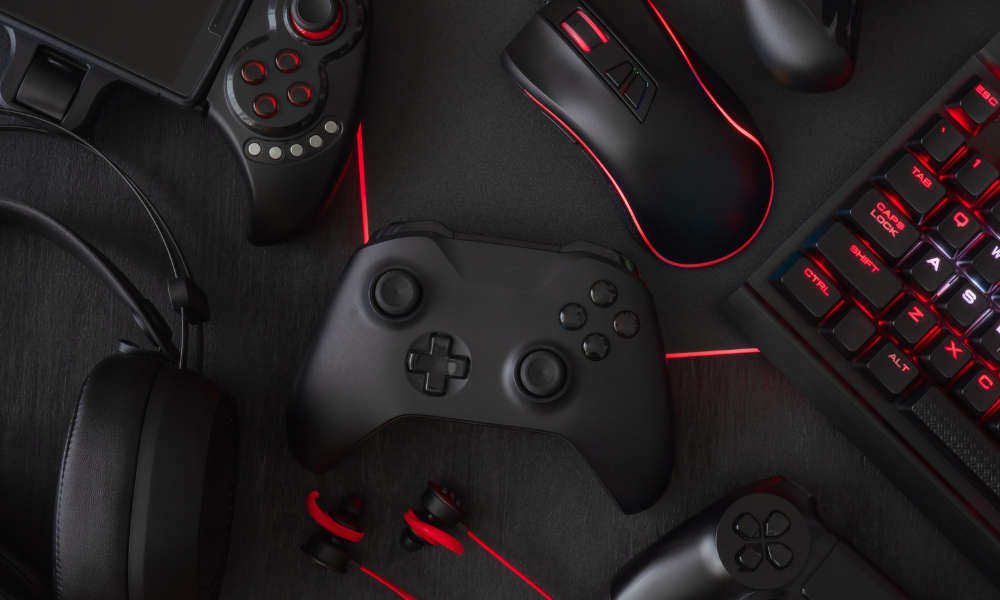
Consejos para mejorar tu coordinación y reflejos en juegos de acción
Mejora tu coordinación y reflejos en juegos de acción con estos ejercicios, consejos y técnicas para un juego más rápido y preciso.
Continúe Leyendo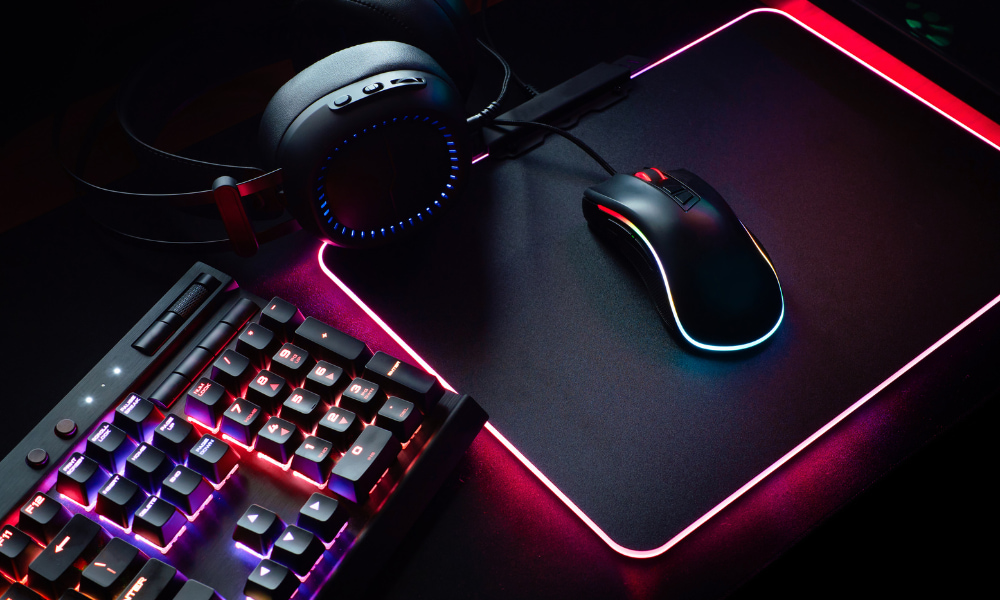
Cómo jugar mejor con el teclado y el ratón: consejos y trucos
Mejore su experiencia de juego con el teclado y el mouse con consejos sobre precisión, combinaciones de teclas personalizadas, ejercicios de reflejos y configuraciones ergonómicas para un mejor rendimiento.
Continúe LeyendoTambién te puede interesar
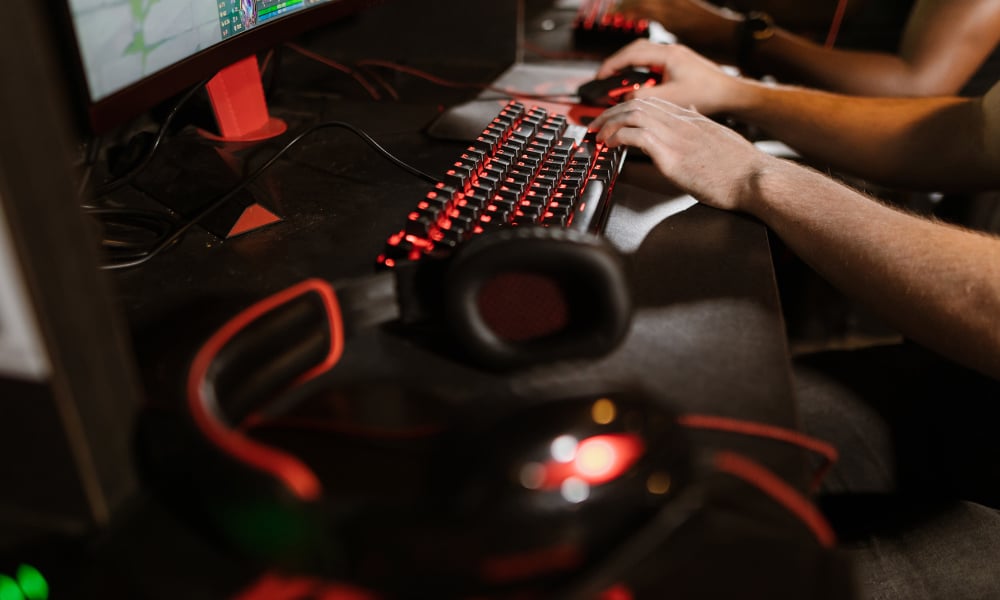
El impacto de las ligas regionales en el crecimiento global de los eSports
Las ligas regionales de deportes electrónicos empoderan a los jugadores, crean compromiso comunitario y fomentan el talento, impulsando el crecimiento global de los juegos móviles.
Continúe Leyendo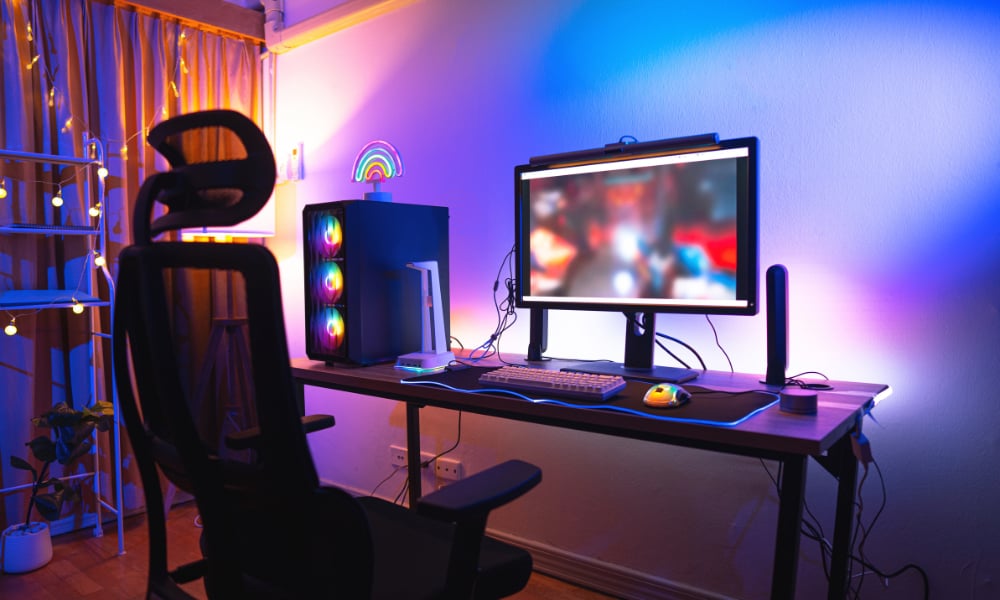
Cómo usar mods y hacks de forma segura en tus juegos
Descubre cómo usar mods y hacks de forma segura en tus juegos. Sigue estos consejos para proteger tu dispositivo, evitar baneos y mejorar tu experiencia de juego.
Continúe Leyendo
Juegos de aventuras para móviles: encuentra el mundo perfecto para explorar en tu teléfono
¡Explora mundos inmersivos en tu teléfono con juegos de aventuras para móviles! Sigue los consejos para elegir, jugar y dominar tu próxima aventura.
Continúe Leyendo